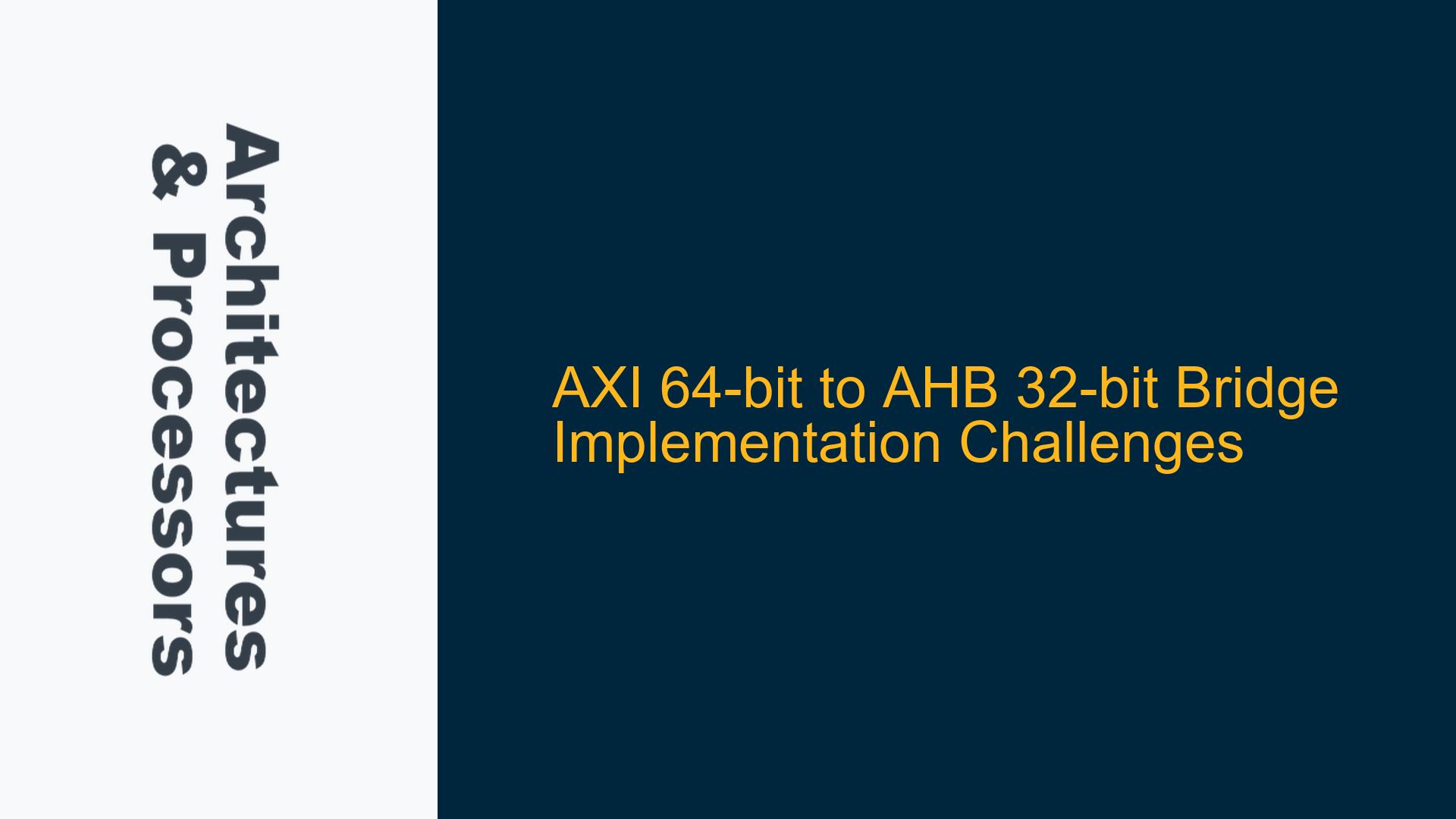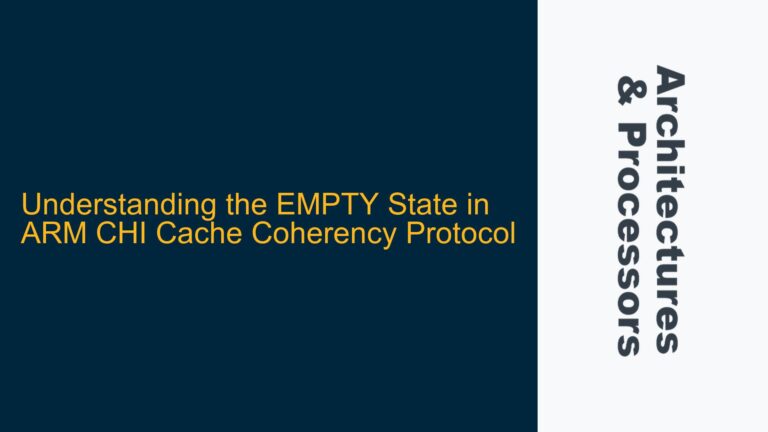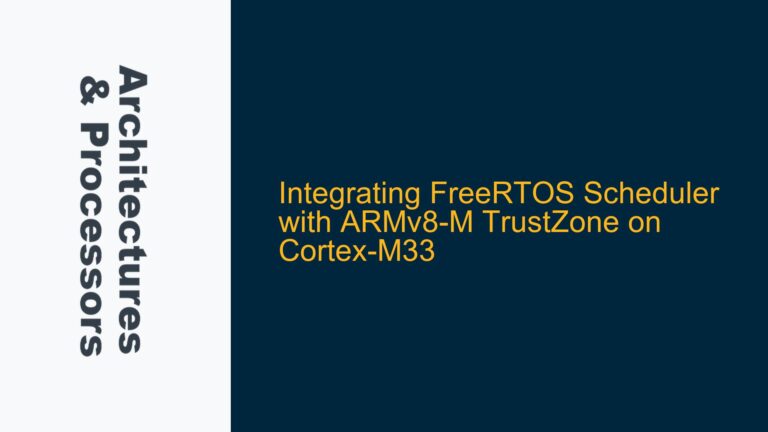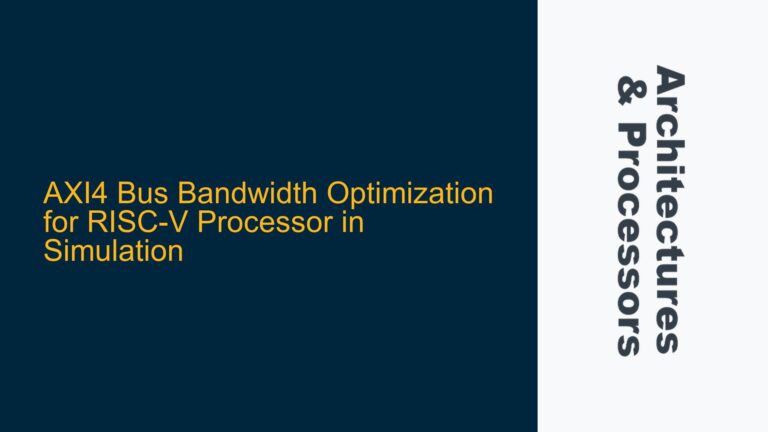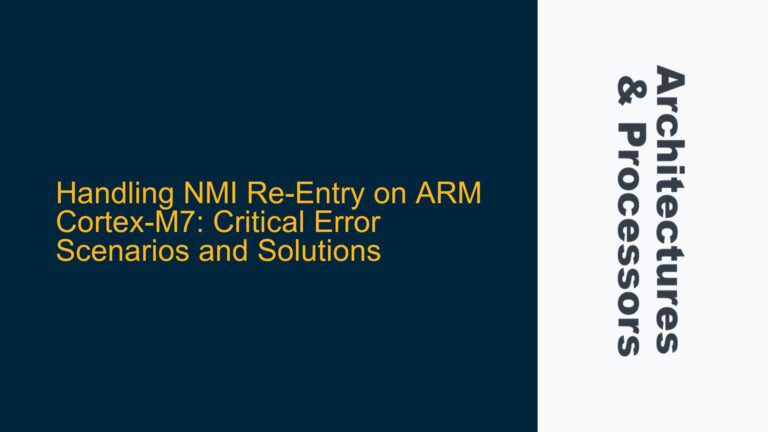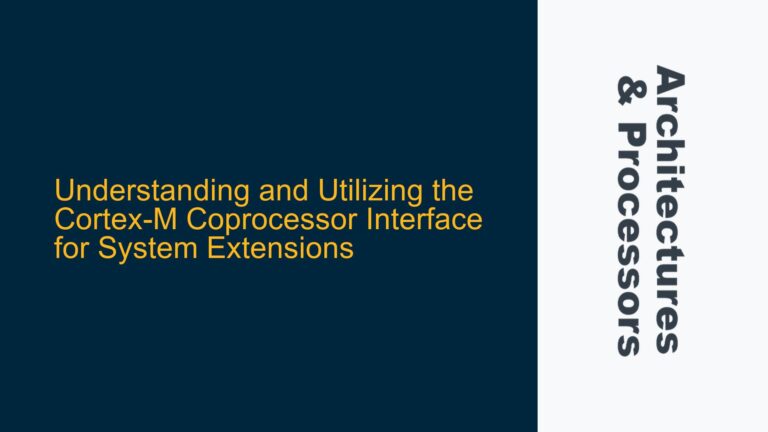AXI 64-bit to AHB 32-bit Protocol and Data Width Conversion Issues
When designing a bridge to connect an AXI 64-bit master to an AHB 32-bit slave, several architectural and protocol-level challenges arise. The primary issue stems from the inherent differences between the AXI and AHB protocols, compounded by the data width mismatch. AXI, being a more advanced protocol, supports features such as out-of-order transactions, multiple outstanding transactions, and burst transfers, which are not natively supported by AHB. Additionally, the data width conversion from 64-bit to 32-bit introduces complexities in data alignment, transfer efficiency, and signal synchronization.
The AXI protocol operates on a 64-bit data bus, which means that each transaction can carry up to 64 bits of data per beat in a burst transfer. In contrast, the AHB protocol operates on a 32-bit data bus, limiting the data transfer to 32 bits per beat. This discrepancy necessitates a mechanism to split the 64-bit AXI transactions into multiple 32-bit AHB transactions, ensuring that data integrity is maintained throughout the process. Furthermore, the AXI protocol’s support for burst transfers of varying lengths and sizes must be carefully managed to ensure that the AHB slave can handle the resulting sequence of 32-bit transactions without data loss or corruption.
Another critical aspect is the handling of control signals and responses. AXI uses a separate set of signals for read and write data channels, along with response signals that indicate the status of each transaction. AHB, on the other hand, uses a more unified set of control signals, which requires careful mapping and synchronization between the two protocols. The bridge must also handle potential timing issues, such as clock domain crossings, where the AXI and AHB interfaces may operate at different clock frequencies.
Protocol Mismatch and Data Width Conversion Complexity
The complexity of implementing an AXI 64-bit to AHB 32-bit bridge can be attributed to several factors, including protocol mismatches, data width conversion, and synchronization challenges. One of the primary causes of these issues is the fundamental differences in how AXI and AHB handle data transfers. AXI’s support for burst transfers and out-of-order transactions introduces a level of complexity that is not present in AHB, which is designed for simpler, in-order transactions.
The data width conversion from 64-bit to 32-bit is another significant source of complexity. Each 64-bit AXI transaction must be split into two 32-bit AHB transactions, which requires careful management of data alignment and transfer sequencing. For example, a 64-bit AXI write transaction must be split into two 32-bit AHB write transactions, with the lower 32 bits being transferred first, followed by the upper 32 bits. Similarly, a 64-bit AXI read transaction must be handled by issuing two 32-bit AHB read transactions and then combining the results into a single 64-bit response.
Clock domain crossing is another potential cause of issues, particularly if the AXI and AHB interfaces operate at different clock frequencies. The bridge must include synchronization logic to ensure that data and control signals are correctly transferred between the two clock domains without introducing metastability or data corruption. This often requires the use of dual-clock FIFOs or other synchronization mechanisms to handle the transfer of data and control signals across clock boundaries.
Additionally, the bridge must handle the mapping of AXI signals to AHB signals, which involves translating AXI-specific features such as burst types, transaction IDs, and response signals into their AHB equivalents. This mapping must be carefully designed to ensure that the AHB slave can correctly interpret and process the transactions generated by the AXI master.
Implementing a Robust AXI to AHB Bridge with Data Width Conversion
To address the challenges of implementing an AXI 64-bit to AHB 32-bit bridge, a systematic approach is required, focusing on protocol translation, data width conversion, and synchronization. The following steps outline a comprehensive solution to these challenges:
Protocol Translation and Signal Mapping
The first step in implementing the bridge is to define the mapping between AXI and AHB signals. This involves translating AXI-specific signals such as AWID, ARID, WDATA, WSTRB, and RRESP into their AHB equivalents, such as HTRANS, HWDATA, and HRESP. The bridge must also handle the conversion of AXI burst types (FIXED, INCR, WRAP) into AHB burst types (SINGLE, INCR, WRAP). This requires a detailed understanding of both protocols and careful design of the signal mapping logic.
For example, an AXI INCR burst of length 4 (64-bit data) would need to be translated into two AHB INCR bursts of length 4 (32-bit data each). The bridge must ensure that the AHB bursts are correctly sequenced and that the data is properly aligned. This can be achieved by using a state machine to manage the conversion process, tracking the current state of the burst and generating the appropriate AHB control signals.
Data Width Conversion and Alignment
The data width conversion from 64-bit to 32-bit requires careful handling of data alignment and transfer sequencing. For write transactions, the bridge must split the 64-bit AXI WDATA into two 32-bit AHB HWDATA values, ensuring that the lower 32 bits are transferred first, followed by the upper 32 bits. The bridge must also manage the AXI WSTRB signals, which indicate which bytes of the 64-bit data are valid, and translate them into the appropriate AHB HWDATA and HWRITE signals.
For read transactions, the bridge must issue two 32-bit AHB read transactions and then combine the results into a single 64-bit AXI RDATA response. This requires the bridge to track the order of the AHB read transactions and correctly align the 32-bit data into the 64-bit AXI response. The bridge must also handle the AXI RRESP signals, which indicate the status of the read transaction, and ensure that they are correctly mapped to the AHB HRESP signals.
Clock Domain Crossing and Synchronization
If the AXI and AHB interfaces operate at different clock frequencies, the bridge must include synchronization logic to handle the transfer of data and control signals between the two clock domains. This can be achieved using dual-clock FIFOs, which allow data to be safely transferred between clock domains without introducing metastability or data corruption. The bridge must also include logic to handle the synchronization of control signals, such as the AXI AWVALID and AHB HREADY signals, to ensure that transactions are correctly initiated and completed.
The synchronization logic must be carefully designed to handle potential timing issues, such as clock skew and jitter, and to ensure that data is transferred correctly between the two clock domains. This often requires the use of handshake signals and additional buffering to ensure that data is not lost or corrupted during the transfer.
Verification and Testing
Once the bridge has been implemented, it must be thoroughly verified to ensure that it correctly handles all possible transaction scenarios, including burst transfers, out-of-order transactions, and error conditions. This requires a comprehensive testbench that includes both AXI and AHB bus functional models, as well as a set of test cases that cover all possible corner cases.
The verification process should include both functional and timing simulations, as well as formal verification to ensure that the bridge meets all protocol requirements. The testbench should also include assertions to check for protocol violations and to ensure that the bridge correctly handles all possible error conditions. Additionally, the bridge should be tested in a system-level simulation environment to ensure that it integrates correctly with other components in the SoC.
Performance Optimization
Finally, the bridge should be optimized for performance, ensuring that it can handle the maximum expected transaction rate without introducing bottlenecks. This may involve optimizing the state machine logic, reducing the latency of the data width conversion process, and minimizing the overhead of the synchronization logic. The bridge should also be designed to handle backpressure from the AHB slave, ensuring that it can correctly throttle the AXI master if the AHB slave is unable to accept new transactions.
In conclusion, implementing an AXI 64-bit to AHB 32-bit bridge requires a deep understanding of both protocols, careful design of the protocol translation and data width conversion logic, and thorough verification to ensure that the bridge meets all functional and performance requirements. By following the steps outlined above, it is possible to create a robust and efficient bridge that seamlessly connects AXI and AHB interfaces, enabling the integration of high-performance AXI masters with legacy AHB slaves in complex SoC designs.
